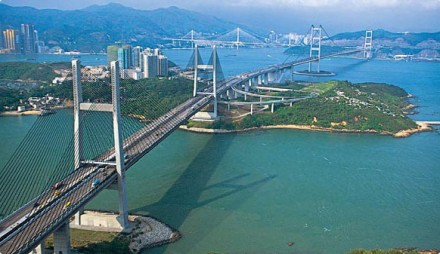 As I slowly feel my way around a brand new city, I find it better to take little steps, get to know the area, get to know what’s available and just build a small comfortable zone. A comfort zone in Shenzhen, a base to start really exploring what the city has to offer.
As I slowly feel my way around a brand new city, I find it better to take little steps, get to know the area, get to know what’s available and just build a small comfortable zone. A comfort zone in Shenzhen, a base to start really exploring what the city has to offer.
The first full day of my stay in Shenzhen I spent walking around Futian, finding places to buy food and drinks. Surviving on hotel resources is expensive, so finding a decent supermarket is key to not running out of money in a far distant country.
CoCo Park
My first stop is just two blocks away from the Marco Polo hotel, a shopping center called CoCo Park. This U shaped structure takes up an entire city block, and four storey’s including one sub-ground level. It’s U shape means there’s a split level open area in the middle, a natural enclosure for outdoor events.
Coco park’s first level is replete with brand label clothes shops and Starbucks. The basement level is taken up by the Jusco department store – an established Japanese department store. It is a proper department store, each department feels like a separate store inside of itself. I thought they were just independent traders, but Jusco is the entire floor. Note: don’t go there if you are hungry, the smell of freshly created delicacies hits you in the face as you walk past Jusco’s food hall deparment.
The second and third floors are packed with restaurants (Shenzhen seems to number the ground floor as the first floor), the typical American fast food brands, Japanese restaurants, noodle bars, Costa, and a Cuban steak restaurant (including the obligatory Che picture).
On the outside eastwards facing side of Coco Park is an outside beer garden. Several beer themed establishments each run their own wood seats and tables, probably a good venue for the warm summer evenings. And soon to open in CoCo park is a German restaurant.
I found CoCo park very very quiet, only a handful of shoppers. I presume that’s the effect of Chinese New Year, I don’t really know. The place is immaculately clean, and feels like a typical glamourous mall from Western cities. Polished concrete throughout.
Leaving CoCo park someone was playing a Westlife single loudly. And that’s when I discovered how music is traded in China. There are groups of people riding bicyles, balanced over the front wheel is a wide box containing hundreds of CDs. So wide that it triples the typical width of a bicycle + rider, and wide enough that attached underneath the box of CDs are two rather big speakers blasting out whatever is currently playing. In each shopping center, or little strip of shops, on a near street corner there’s one of these music sellers. I guess the economics and availability of distributing music in China doesn’t extend to having a dedicated shop or department.
Central Walk Mall
Next stop was the Central Walk Mall, again, just three blocks from my hotel, and across the road from Shangri-La Hotel in Futian (and with the overhead walkway between the two, there’s no road to cross). Central Walk is just one storey high from the outside, but inside it has 3 sub ground levels. The entire shopping center is one large ring with an open air center. So it sounds very busy with the noise generated by the amusement arcade and the cinema center on the 2nd sub level.
The third sub-level is taken up by the Carrefour department store – an established French label. The main food area feels just like a Tesco super store, but the other departments have their unique feel. The strong smell of leather catches you as you enter, thanks to the shoe department placed right at the entrance I used. Decently priced leather shoes.
I hit my first culture shock moment in Carrefour. You know the fish and eels you are buying are fresh because they are swimming away in their own water tanks. I didn’t expect that. And I didn’t want to hang around and see if the tortoises were walking around their enclosures. Culture shock is about the initial surprise from an unexpected occurance, this to me wasn’t something expected to encounter. When you think about it from a detached perspective, live fish and eels make sense. I bloody hope they were eels…
I found bottles of Coke. Shenzhen seems to have Coke Zero but not Diet Coke or Coke Lite. At 2.30 RMB per 500ml bottle, that’s four times cheaper than the typical special offers in the UK for the equivalent product. I’m certainly not going to be coke-deprived on this holiday. And a 2 for 1 offer on Tyrells British Crisps means I have an emergency stash.
And of course, being the paperphile I am, I couldn’t resist picking up a notepad or two. Only two this time. The typical paper quality on offer is just substantially better than equivalent offerings in a UK supermarket. The paper feels like high quality writing paper, not the UK exercise-book / exam pad level. And still just as cheap. 5RMB (under 60p) for a spiral bound notepad, and 7.50RMB for an excerise book somewhere between A4 and A5 sized. One interesting feature of the exercise book is a page that shows Latin alphabet characters at various sizes, and an intriguing line showing the size of Chinese pictographs of an equivalent size. So out of fascination, into my shopping basket it went.
Carrefour bakes its own bread, and it’s supposed to be very good quality – that’s the selling point for expats. There is also supposed to be a top-quality sandwich shop near buy that’s recommended, but I haven’t tracked it down yet.
A helpful and polite checkout lady had no problems working around our lack of common language, I didn’t understand the verbal question, so we went for visual cues, and with a nod from me, I also paid for a carrier bag for my purchases. At least I could thank her in the one piece of Chinese I do know and am comfortable speaking.
I wandered into sudan, a computer store, firstly to find some replacement Sennheiser inter-canal earphones. They were 530RMB, so about £60 for the CX-300s. That’s quite a lot outside my price expectation for a decent set of earphones. My second reason is to see the typical Chinese computer setup. With a pictograph based writing system I was intrigued to see how keyboards are set up. China has a variety of different ways of inputting pictographs, so I was interested in seeing how the general computer is set up.
And I found the bog standard qwerty keyboard. No pictographs in sight. No specialised keyboard, no obvious alt or ctrl base modifier keys. Nothing. So I guess that means either chinese text is entered as pinyin, or software maps the keyboard into a set of 15 or so strokes so the labels on the keyboard are just fluff. Looking at someone working on a Dell laptop inside a small cosmetics stall outside stall confirmed that she was on a standard qwerty keyboard. The intrigue remains unresolved.
I did find one shop that stocked CDs. I wasn’t ready to walk in and find the two Mandarin albums I liked on the flight in. Small steps.
On the outside facing facades of Central Walk is a strip of restaurants, again a selection of diversity from American, through to a typical (relative to London Chinatown places I’ve tried) Chinese restaurants. Central Mall has a Subway sandwich shop.
Ecological balance of Shenzhen
I decided to find the green area nearby the shopping centre, and I realised looking back towards the shopping center why I couldn’t see it from my hotel room. It wasn’t that there was a skyscraper in the way, I can actually see Central Walk from my hotel room, it’s that green area of trees in view just past the skyscraper. Yes, the shopping center looks like a city block of trees, because it’s only one storey high, and the roof is covered in greenery.
And that to me is part of the magic that is Shenzhen. The fastest growing city. Big business flocking to base their Chinese headquarters here (e.g. the Lego company). Multiple skyscrapers being built. But with a balance of concrete jungle and green breathing spaces. And where better to put up a green space than on a roof of a low building? Why waste that space, when it can be effectively used to balance out the emissions that a popular shopping venue will cost?
Granted, the green areas are designed and built. I don’t know whether any green areas are natural. I know the fake rocks probably hold a speaker for a connected audio system, but they don’t hinder or interfere with the ecosystem around it. Granted, the planned lake in the city block isn’t finished yet, but when it is, it’s another step forward for creating a sustainable ecosystem.
There is a deliberate balance taken in the design and layout of Shenzhen. There is no concrete jungle. There are small clusters of skyscrapers broken out with smaller city-block sized areas, smaller clusters of dense residential blocks, and dotted with green areas. of just grass and trees, of plants and ecological systems that live alongside concrete giants. I can see this being a place where a lunchbreak to a green area is considered normal. It’s balance to the people who work in Shenzhen, as well, I guess as a balance to the overall global ecosystem.
Shenzhen is almost like Hong Kong re-imagined. It certainly benefits being within a stone’s throw of Hong Kong, and the experience of Hong Kong has been taken into account and Shenzhen is benefitting from that. Of course, Shenzhen, as a city is about 35 years old, so it hasn’t had to readapt like Hong Kong and London. That newness lends itself to a Sim City like experience. It has indeed been thought out and carefully planned, there is attention to detail, attention to the flow of people and vehicles. Attention to a city’s need to breath. It is no Milton Keynes, or cookie-cutter US suburb, it’s a living, flowing, breathing city that’s stil very much growing, and yet to hit a major pain point.
 China, Shenzhen 2013, Travelling
China, Shenzhen 2013, Travelling  1 Comment
1 Comment 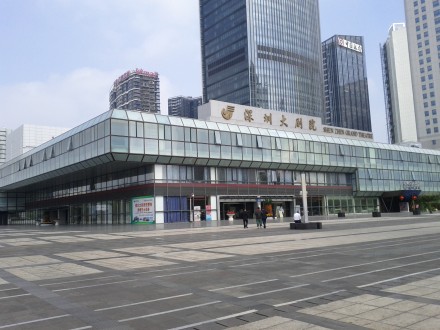
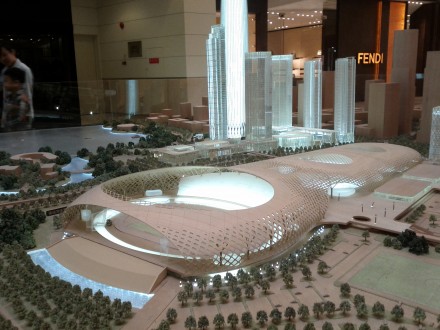
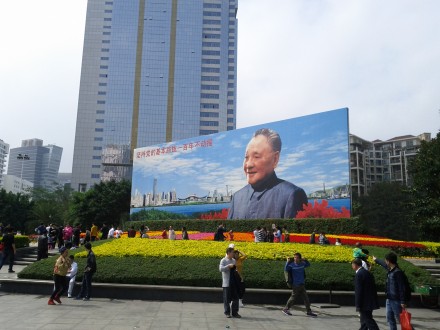
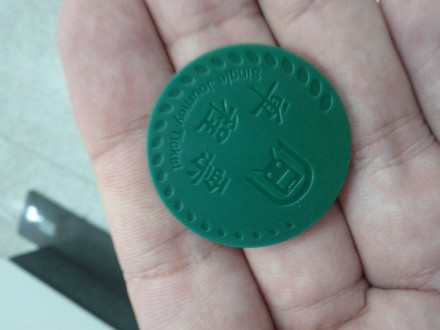
 As I slowly feel my way around a brand new city, I find it better to take little steps, get to know the area, get to know what’s available and just build a small comfortable zone. A comfort zone in Shenzhen, a base to start really exploring what the city has to offer.
As I slowly feel my way around a brand new city, I find it better to take little steps, get to know the area, get to know what’s available and just build a small comfortable zone. A comfort zone in Shenzhen, a base to start really exploring what the city has to offer.